
With Scotland’s mountains resplendent in their white winter coats, David Lintern looks at winters past. Did he make good decisions, or was he just lucky?
I love winter. I love everything about it – the challenge, the wild weather, that light, a land made strange and alien under snow. And yes, the extra risk. But in 2018, I was confronted with the less palatable side of that fascination.
My friend Stef suggested a 3-day trip around some of the harder to reach bits of the Highlands – a few Corbetts and Munros in Monar, including Lurg Mhòr and Bidein a’ Choire Sheasgaich (sometimes affectionately nicknamed Cheesecake). We had a perfect weather window, and the snow was consolidated and in good, crunchy nick. On our first Corbett, we picked up a single line of crampon tracks, which we followed for 24hours or so. We lost the trail after traversing Cheesecake, finding our planned descent towards Beinn Tharsuinn barred by a steep, convex slope of icy snow. After recce’ing limited options, we decided to walk around via the coire to the west. It wasn’t without risk and was out of our way, but it felt like the better option for us, with heavy backpacking loads. On our return home, we learned that someone had gone missing in the same area. Via social media, myself and others spoke with his family, then with Police. He had left a route card. We’d been following in his footsteps, just a few hours behind.
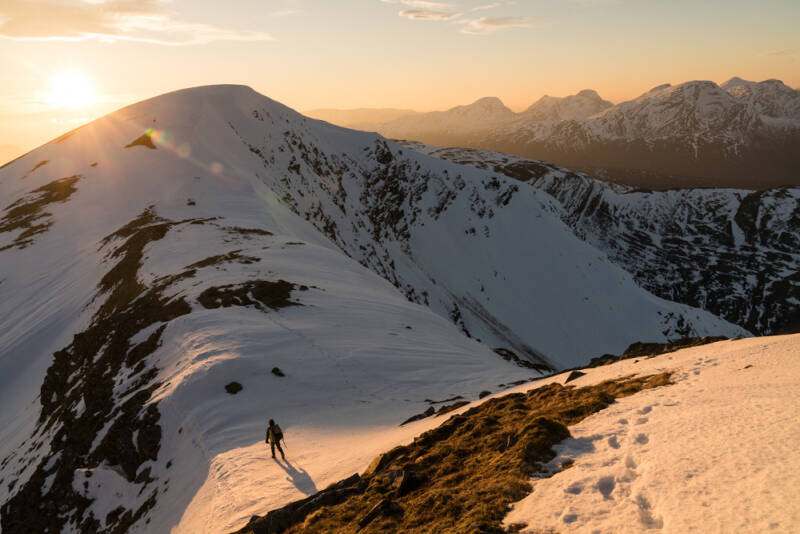
Stephen was from Crieff and just like you and I, he loved the hills. There’s a plaque dedicated to him over the fireplace in the bothy at Bendronaig lodge. After that, my fascination with winter was no longer theoretical, a game or just for fun. Mostly, these places give us life. Sometimes they take.
Fast forward to January 2022, and a friend was heading up for a grade one winter climbing gully route in the Cairngorms. Dan has a proper job and family commitments hundreds of miles away that leave little room for the vagaries of Scottish winter, which was in no mood to compromise. After considering our options elsewhere in the country in the days preceding and deciding that pretty much everywhere looked as bad as everywhere else, Dan surprised me by saying he’d still like to come. Such are the pressures of a proper job that even a 40mph sleet facial at 1100ms won’t dissuade the determined. We’d “go in and take a look. I don’t think we’ll need the second axe though, Dan”.
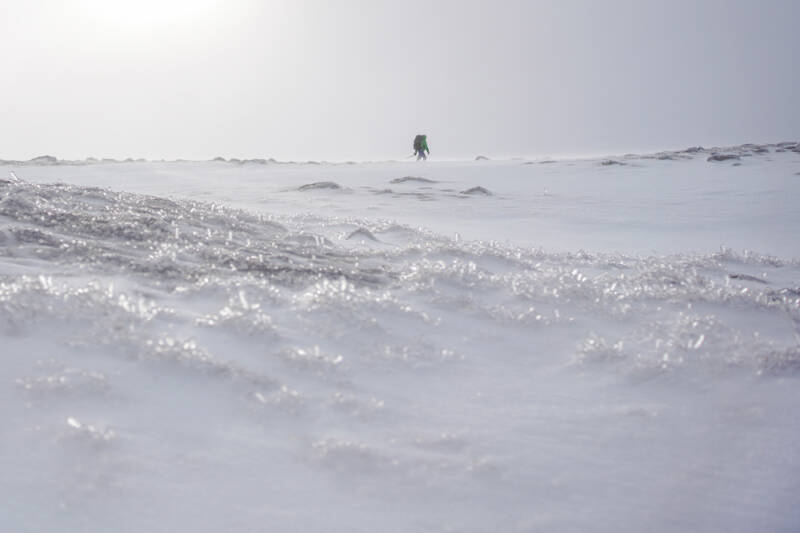
Going in and taking a look after a long journey can mean the pressure is on to make the plan run regardless of the consequences. Perhaps it’s age, or experience, but as soon as we arrived it was clear that discretion would be best. Caving drysuits and marigold gloves would have been better suited to a ‘climb’ in those conditions.
Yet it was a fine trip, regardless. We played cards with some fellow hill vagrants in the Hutchison Memorial Hut and honed our navigation (well, Dan honed, and I got turned about while taking photos) on Derry Cairngorm. The take home is that we got home. It’s OK to change your mind, and that’s what we did.
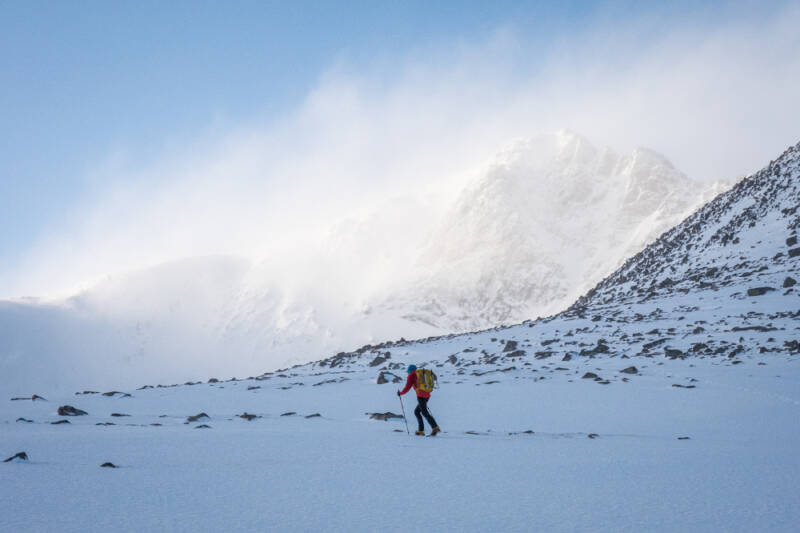
Typically, conditions begin to stabilise into February and March, and that’s what happened in 2021/22 too, but this season, I was lucky to have the moral support of a pal who’s also a mountain leader – John King. On his days off, John and I would point ourselves at the best of the available conditions and, in this case, into the briefest of weather windows. Tagging along with someone who has a professional eye for this stuff was invaluable for my confidence and meant I wasted less time second guessing myself. We choose a route called ‘The Runnel’ based on grade and approach (a short walk in, a short route and a manageable-for-us grade two) but really, on conditions – windspeed and direction, snow conditions, avalanche risk. We knew the weather would close in completely by the afternoon.
As you can see from the photo above, we walked into the wind on the approach, but were mostly sheltered once on the route (aside from a few spindrift showers). Topping out, it was difficult to stand up, but crucially, our walk out was equally short, and we had the wind at our backs. The key thing is that we chose based not on a whim or a wish list, nor on blind ambition, but on the environment – an environment we knew from the forecasts would evolve rapidly. Choosing something short and sweet meant we still had a good day, which set us up nicely for the next time.
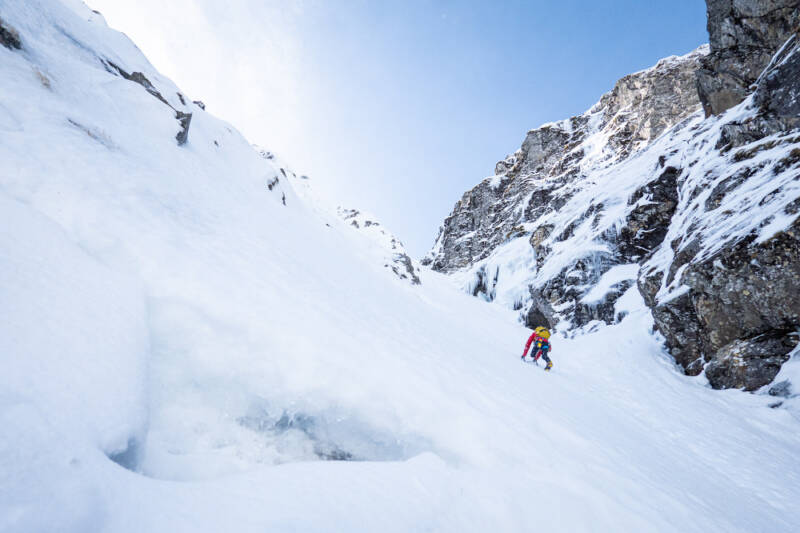
A week or so later and one of those fabled winter high pressures hovered over the Highlands. The forecasts showed clear, calm weather, but a lean season followed by a cold snap meant very hard, icy snow. We made for Creag Meagaidh and two gully lines, the first of which was Raeburn’s gully – a grade one route, but long and steep and packed with rock hard snow. It’s much harder to ‘protect’ gullies, so we solo’ed the route without rope, but we both brought two axes each, and were very glad of the extra purchase.
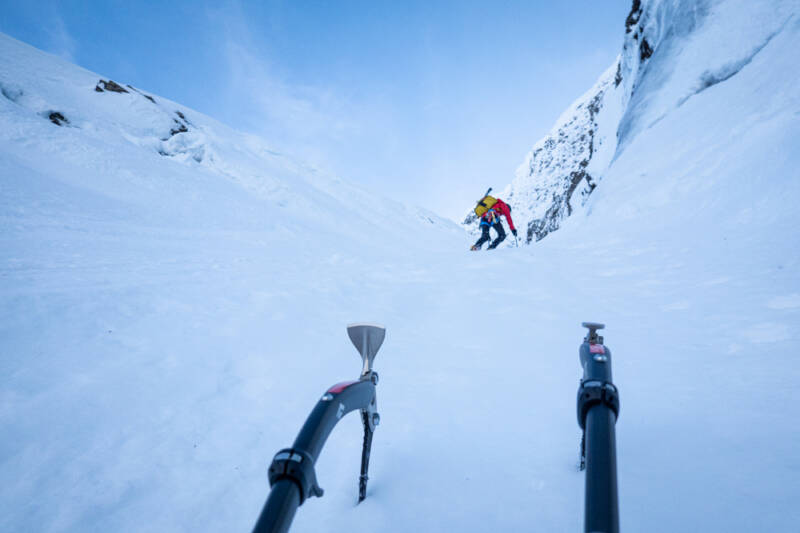
As we walked back across the plateau and descended to ‘the window’ (the bealach), we heard and then saw a rescue helicopter. Further down, we met with two climbers who told us of the fatality in Raeburn’s. Beneath us, a man had slipped and fallen. It’s likely we were the last ones to talk to him. The three of us had chatted as we geared up.
After that, our planned grade two for the day felt… inappropriate. We opted for ‘Easy gully’; another grade one, and another very long line on steep, hard snow. Again, we were very grateful indeed for that extra axe, and counted our blessings to the top.
It’s easy to assume that bad weather results in more accidents, but the statistics show the opposite is true. Most mountain rescue call outs happen in fine weather, when more of us are out. And those benign forecasts can blind us to other risks – ice, avalanches, high winds. During those two weeks of cold and calm conditions, a number of people lost their lives.
Our focus needs to be on conditions as a whole, not just the weather.
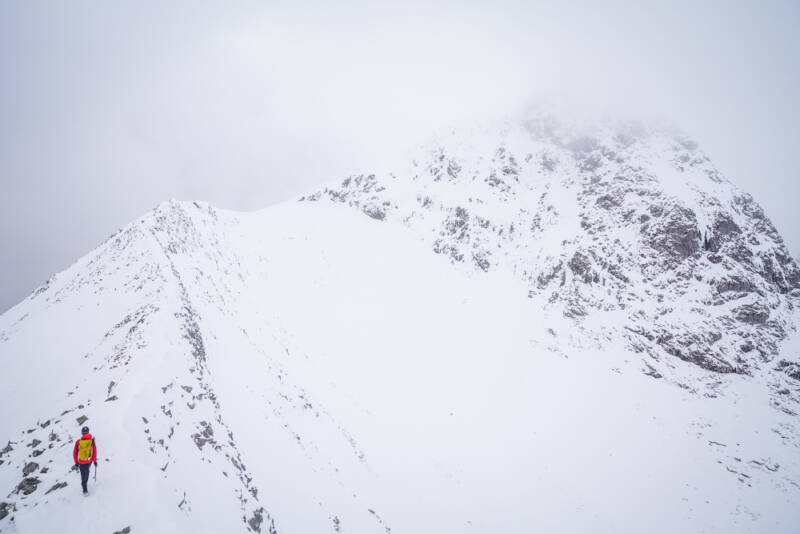
A week or so later, and a big thaw was followed by a refreeze. The gullies would be leaner and even icier now, and perhaps not even stable. But windspeeds looked mellow and confirmed to us both that a ridge route would be viable. And so, we tiptoed west and found ourselves wading through fresh, unconsolidated snow on the east ridge of Càrn Dearg Meadhonach. Bolting on Càrn Mòr Dearg Arête on the way to Ben Nevis made for a complete journey, a longer but easier route overall (both grade one winter routes) and every bit as fulfilling as our other outings. A parting glance down number 4 gully on the Ben confirmed that our caution had been well placed. Near the lip of the gully, it was banked out vertical, and beyond, full of recent avalanche debris.

In March, I joined my friend Richard on an overnight trip back in the Cairngorms. Again, the forecast showed stable weather, but we weren’t sure what snow would be left, and in what condition. Looking at the upper reaches of Castle Gates gully (grade one) through a backpacker’s telescope showed glide cracks in the snowpack. These show up as the snowpack melts at different rates and warn of a likely avalanche. The snow we’d encountered thus far had been rotten and thawing fast… but might it refreeze overnight? The solution was simply to wait and see. We postponed until the morning and climbed the gully on reassuringly firm snow from the outset, stepping over the two cracks near the top without issue.
Then again, maybe we just got lucky. The winter hills are a ‘wicked learning’ environment – we humans don’t control all the variables and our decisions don’t always lead to predictable outcomes. Even showcasing the stories above as ‘good decisions’ is fraught with difficulty. Why? Because conditions will likely be different next time. And because the mountain does not care about the games we play. It is capricious, not ‘kind’. It does not always behave as we expect, and the consequences of an incorrect expectation can be fatal.
And yet… basing our choices based on conditions, not ambitions, can only make us safer. Not safe. But safer.
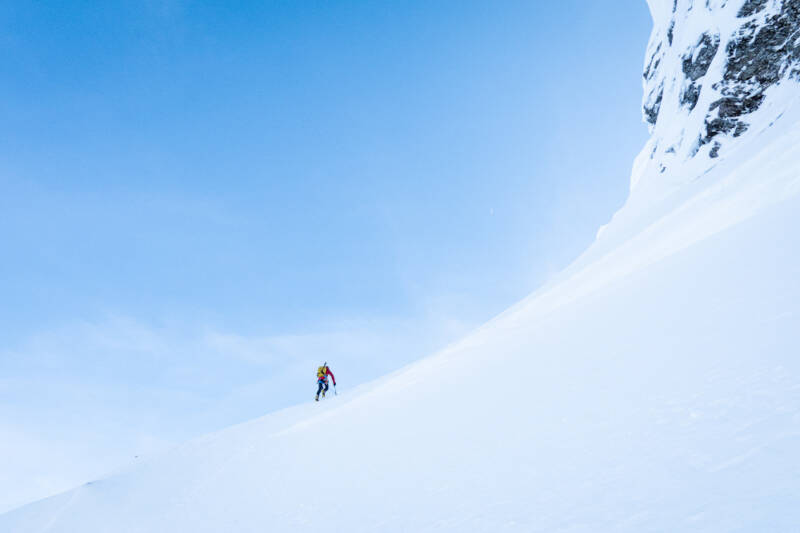
Calls for help to Mountain Rescue are at an all-time high. The indications are that it’s at least partly a result of more people accessing the outdoors since the pandemic. Higher numbers of call outs doesn’t necessarily suggest people are getting more careless, but it might suggest there are more new entrants.
My hunch is that our unpredictable seasons also play a role, in tandem with the idea of ‘scarcity’. As climate change becomes increasingly obvious in the mountains, we crave those big winter days so much that we might convince ourselves that conditions are more in our favour than they really are. FOMO (fear of missing out) can drive us to make unwise choices about the weather or our abilities. The media (social and otherwise) can influence our behaviour in planning or on the day itself. Acknowledging those influences is a first step to mitigating them.

I’ve borrowed the title for this article (with permission) from the Alaskan adventurer Luc Mehl – someone whose high jinks in wild places have inspired me. Luc explained “I don’t own the phrase [Start and end at home]. I made stickers with that message after a former girlfriend died in an avalanche, an easy visual reminder to keep track of the top priority: to make the decisions that will get me home safely.” The simplicity of that message is worth repeating… like a mantra if it helps. Playing it safe is not a compromise – making the right decision is empowering. My own penny drop moment last winter was that that process begins in the days and weeks before. I realised just how much study was required if I wanted to make the most of our increasingly temperamental winters.
How?
We have amazingly powerful tools available to us in the 21st century. Use ALL of them – the web-based weather and avalanche forecasts (read the SAIS blogs as well as the forecasts), the route guides – online and in print. Stay flexible in your ideas for location and route. If you’re working to set dates, have several plans in different areas ready to pull off the shelf, depending on local conditions. Commit – to preparation, not lucky breaks. It’s so rewarding when the homework pays off. And on the day, keep looking and listening – to the place and the conditions, to yourself and your companions. Respond with care to changes as the day unfolds.
